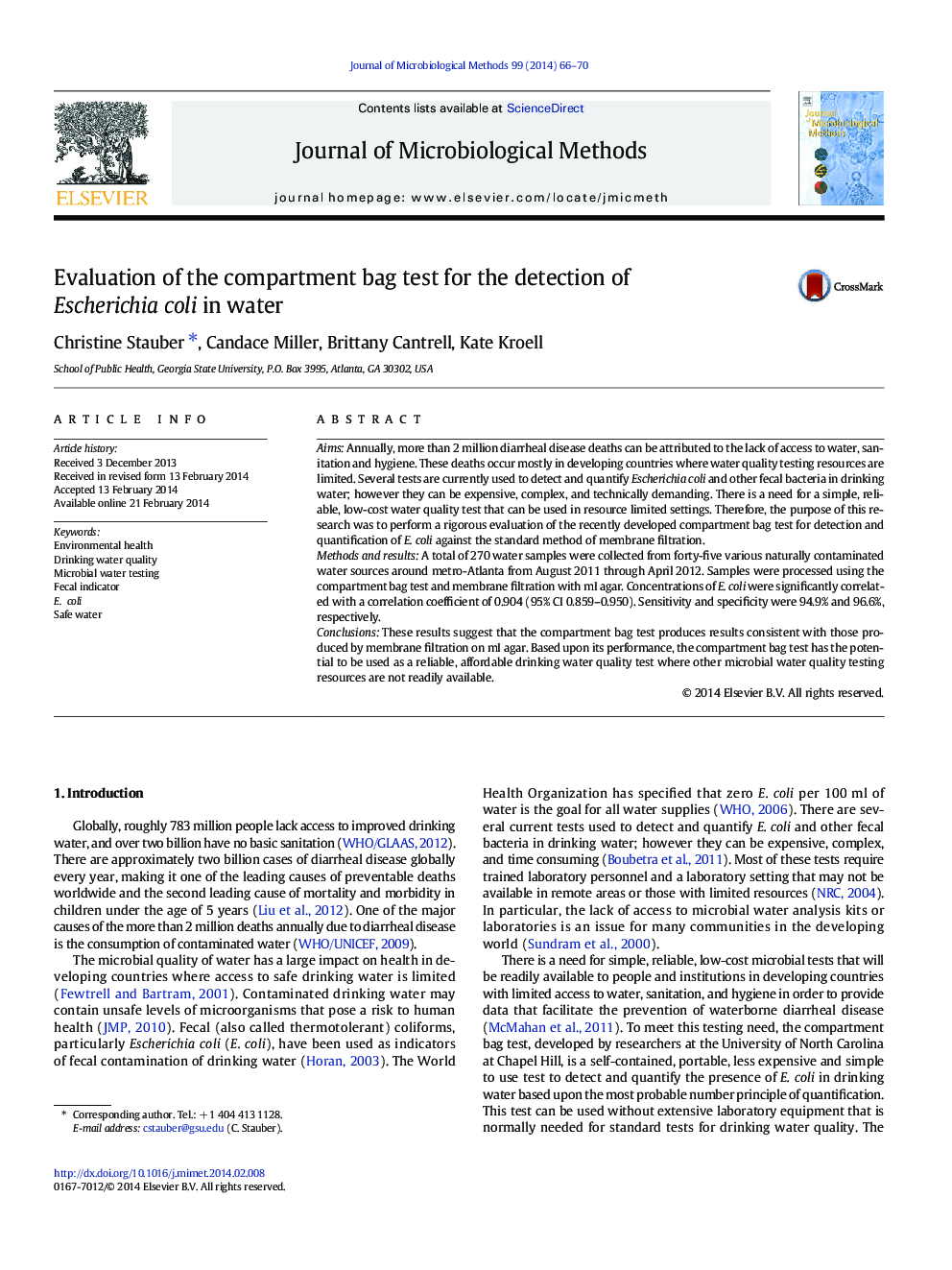| Article ID | Journal | Published Year | Pages | File Type |
|---|---|---|---|---|
| 2090012 | Journal of Microbiological Methods | 2014 | 5 Pages |
•Compartment bag test and membrane filtration were compared for detection of E. coli.•Compartment bag test had high sensitivity and specificity compared to mI agar.•The test is a reliable tool for areas where water testing is not easily accessible.
AimsAnnually, more than 2 million diarrheal disease deaths can be attributed to the lack of access to water, sanitation and hygiene. These deaths occur mostly in developing countries where water quality testing resources are limited. Several tests are currently used to detect and quantify Escherichia coli and other fecal bacteria in drinking water; however they can be expensive, complex, and technically demanding. There is a need for a simple, reliable, low-cost water quality test that can be used in resource limited settings. Therefore, the purpose of this research was to perform a rigorous evaluation of the recently developed compartment bag test for detection and quantification of E. coli against the standard method of membrane filtration.Methods and resultsA total of 270 water samples were collected from forty-five various naturally contaminated water sources around metro-Atlanta from August 2011 through April 2012. Samples were processed using the compartment bag test and membrane filtration with mI agar. Concentrations of E. coli were significantly correlated with a correlation coefficient of 0.904 (95% CI 0.859–0.950). Sensitivity and specificity were 94.9% and 96.6%, respectively.ConclusionsThese results suggest that the compartment bag test produces results consistent with those produced by membrane filtration on mI agar. Based upon its performance, the compartment bag test has the potential to be used as a reliable, affordable drinking water quality test where other microbial water quality testing resources are not readily available.
